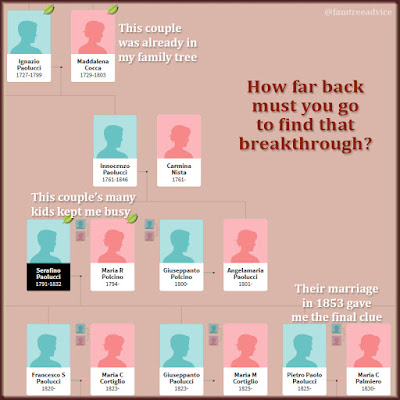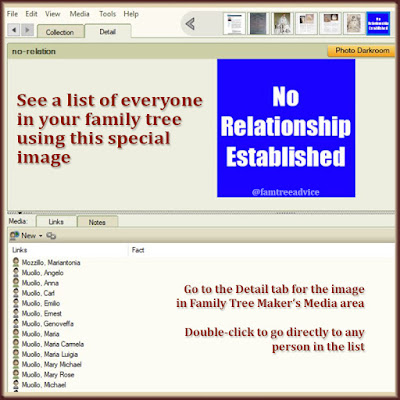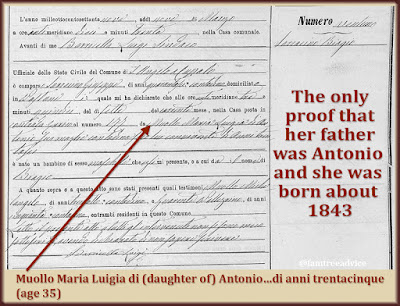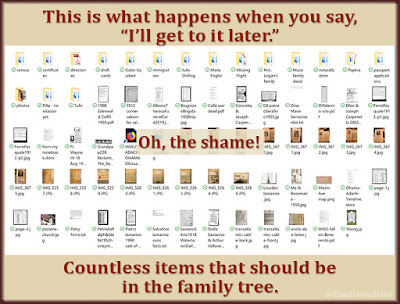Building out a friend's family tree expanded my own tree in new directions.
Because of my family's origins, building my family tree to 1,000s and 1,000s of people is a given. It's just a matter of time.
You see, all my pre-1900 ancestors came from an area of Italy that's just over HALF the size of Rhode Island. And they stayed in one place for at least 500 years—and probably many more. I was able to download 1,000s of vital records from my handful of hometowns, giving me tons of data. On my computer, waiting in those birth, marriage, and death records, are tons of relatives.
I have a deep emotional attachment to these towns and each person's beautiful Italian name. I love and want them all for my family tree.
Because of how long my townspeople stayed put, I decided to follow up on a genealogy hunch.
 |
| What are the odds that these 2 best friends would be relatives? Where they grew up, the odds were good. |
My parents grew up in the Bronx, New York, as children of Italian immigrants. My dad's best friend was his grade school classmate, Johnny. As they grew up, they played baseball together and shot a lot of pool together.
In 1954, my dad asked Johnny to be the Best Man at his wedding. Today, well into their 80s, dad and Johnny always call each other on their birthdays and catch up.
Here's where that hunch comes in. Johnny's last name is very common in my paternal grandfather's hometown.
So I thought…could Johnny be related to us?
Here are the steps I took to turn Best Man Johnny into Cousin Johnny.
Find Their Passage to America
I knew from Johnny's 1940 census that his mom was born in New York, but his dad came from Italy. And my dad knew he was from Grandpas' town of Colle Sannita. A quick search on Ancestry.com turned up Johnny's father Francesco's 1921 ship manifest and 1938 naturalization papers. Sadly, Francesco died one year after becoming a citizen.
Searching through Italian Records
Now it was time to trace Francesco-the-immigrant's family in my Italian document collection. Here's what I found:
- Francesco's birth record, giving me his parents' names and ages
- His parent's birth records, giving me their parents' names and ages
- Francesco's 3 siblings and the spouse of one of them
- His great grandparents, Serafino and Maria Raffaela, who turned into a gold mine. I found their 9 children and 5 of the children's weddings.
But as big as dad's friend Johnny's tree had grown, there was still no connection to us.
Looking Again at U.S. Records
When Johnny's father's tree didn't get me anywhere, I thought I'd investigate Johnny's mother. But I didn't even know her last name.
Luckily, the 1910 census and a single gravestone image told me everything I needed to know.
Johnny's mother had the same married name and maiden name! Her father came from our town of Colle Sannita, too.
Back to Italy We Go
I found the Italian birth record for Johnny's maternal grandfather. He was Raffaele, and his birth date helped me confirm the U.S. naturalization papers I found for him.
I only had to go back one more generation to make a big discovery. Our friend Johnny's maternal great grandfather and paternal great grandfather were brothers.
Think about that. Johnny's great grandfathers were brothers. That means his parents were 2nd cousins. This was getting really interesting!
 |
| You may have to climb several generations of a family tree to find the connection. |
Breakthrough Time
It was the 1853 marriage records for Johnny's maternal great grandparents that blew this whole search mission wide open.
You see, the truly wonderful thing about Italian marriage records is all the vital records they include. You get:
- the bride and groom's birth records
- the death record for any of their deceased parents
- the death record for either of their deceased grandfathers, if their father is dead
The reason for this is you needed your father's permission to marry. And if your father was dead, you needed your grandfather's permission to marry. If both were dead, then OK, we'll accept your mom's approval.
When this couple married in 1853, the groom's father and grandfather were dead. (Yay!) Their death records were part of the marriage records.
 |
| Finding out your best friend is part of the family. |
I attached the parents to Innocenzo. At that moment, the 50 people in our friend Johnny's family tree changed from "No direct relationship found" to actual relatives.
I texted my dad. "Your best man Johnny is the 5th cousin of your Aunt Susie's husband." Aunt Susie was the younger sister of my father's father.
While this is an in-law relationship, there's more to it. Aunt Susie's husband's brother, still alive and well, is a DNA match to my dad and me. We're in the neighborhood of 4th to 6th cousins.
"Johnny just got promoted from Best Man to relative." That's what my dad texted to me.
Acting on this hunch took less than 2 days—from finding Johnny's 2nd great aunts and uncles, to making him my grandfather's in-law.
Behold the power of adding unrelated people to your family tree!











